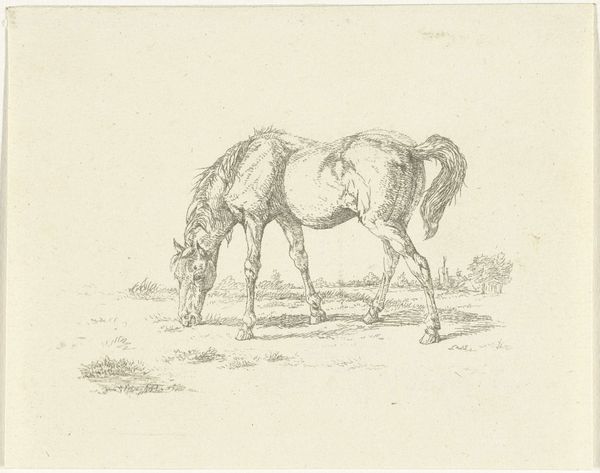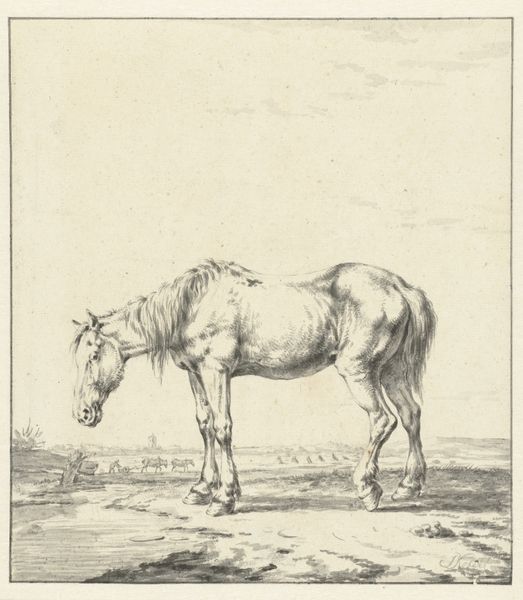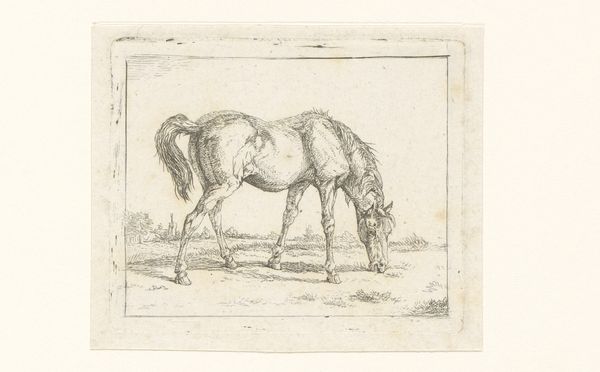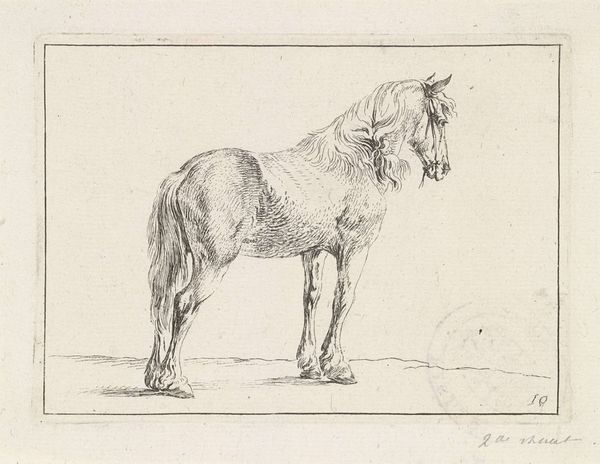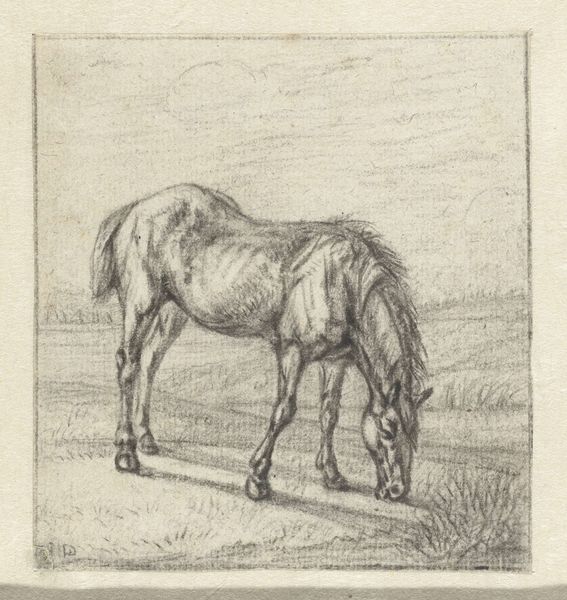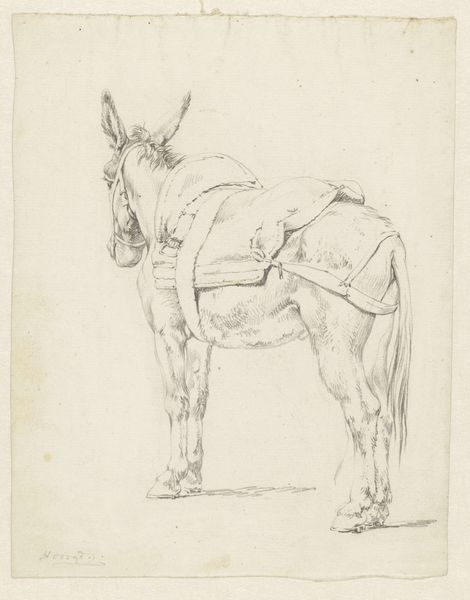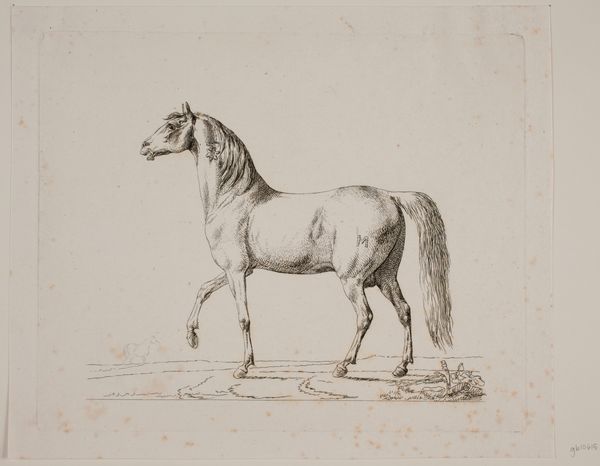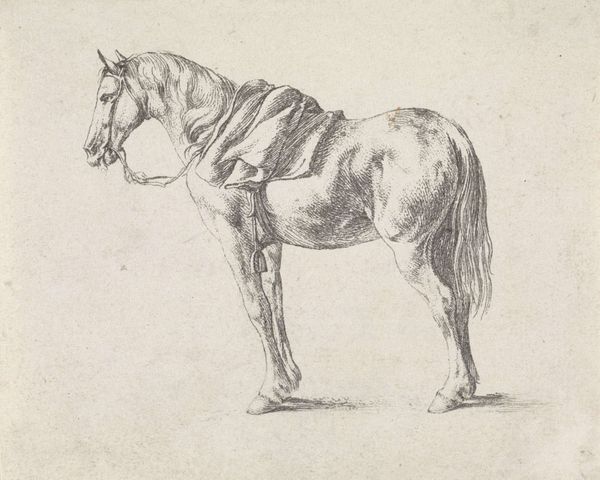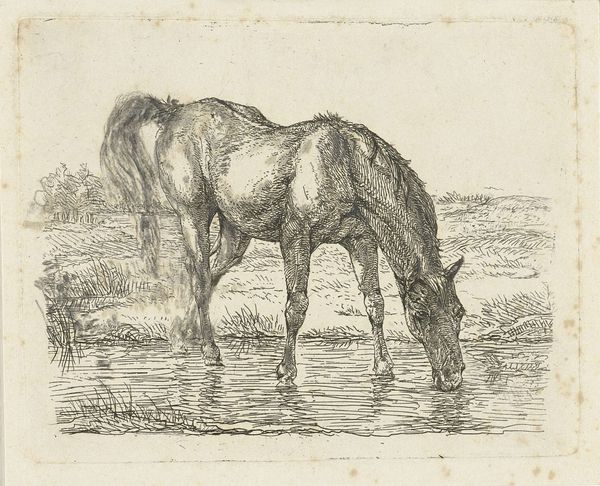
drawing, etching
#
drawing
#
quirky sketch
#
animal
#
pen sketch
#
etching
#
pencil sketch
#
incomplete sketchy
#
landscape
#
personal sketchbook
#
idea generation sketch
#
sketchwork
#
pen-ink sketch
#
horse
#
sketchbook drawing
#
genre-painting
#
realism
#
initial sketch
Dimensions: height 59 mm, width 70 mm
Copyright: Rijks Museum: Open Domain
Curator: Let’s turn our attention to "Grazend paard naar links" which roughly translates to "Grazing Horse Facing Left". This etching is attributed to Jan Dasveldt and believed to have been created sometime between 1780 and 1855. Editor: Immediately, I'm struck by the line work. It's incredibly detailed, capturing the animal's form with a surprising level of realism given the seeming simplicity of the materials and method. You can almost feel the texture of its coat. Curator: Dasveldt's piece offers a glimpse into the pastoral ideals of the late 18th and early to mid 19th century, a time when the relationship between humanity and nature was undergoing a radical transformation as a consequence of rapidly escalating industrial development. Think of Romanticism; its concerns mirror those in Dasveldt's bucolic imagery. Editor: And the social context becomes relevant in assessing the use of etching itself. Etchings allowed for more democratic access to imagery because they were easily reproducible. How would Dasveldt himself have related to the depicted animal in light of emergent, industrialized production? Curator: The image also reminds us to consider the role of horses in the era. They were fundamental to transport, agriculture, and military endeavors, embodying a source of labor as well as national identity. This positioning reflects a particular understanding of human-animal relations, one where power dynamics are very clearly delineated. Editor: Indeed. Observing the seeming ease with which this etching was produced belies its role as part of the machinery involved in constructing social identities as well as hierarchies predicated upon labor. There’s a material cost to everything, including representation. Curator: Absolutely. Thinking through the artist's choices concerning subject matter and presentation enhances the overall meaning that we derive from this work. Editor: Yes. Examining the intersection of social processes and materiality leads us toward more profound engagements.
Comments
No comments
Be the first to comment and join the conversation on the ultimate creative platform.
